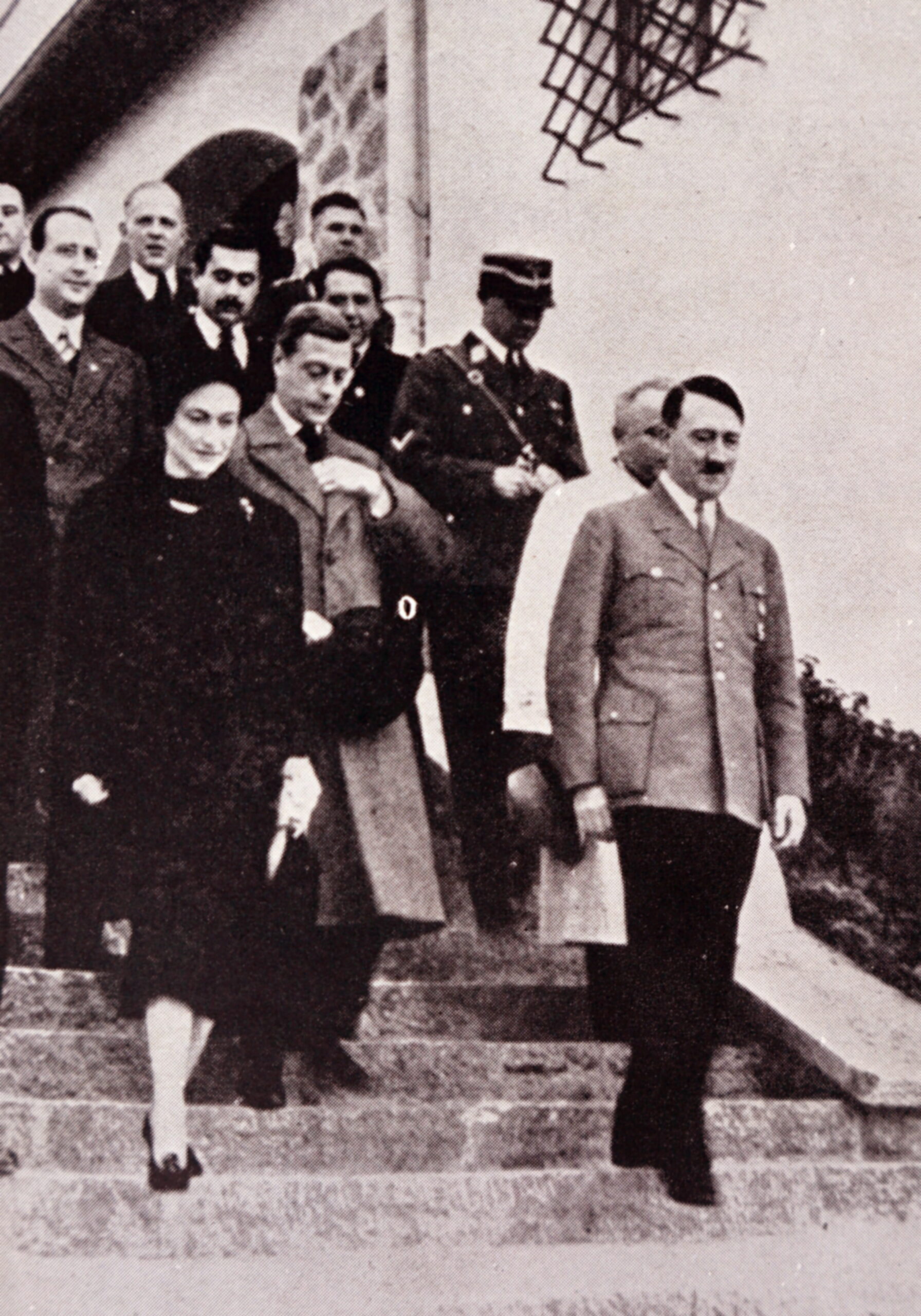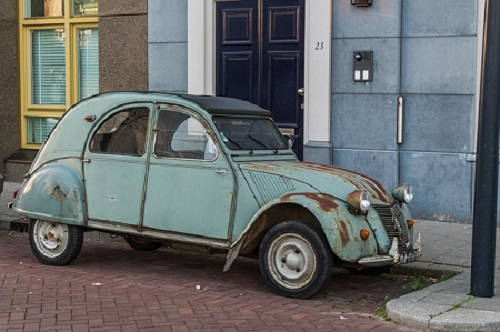According to a royal expert, the late Prince Philip had a rather pointed nickname for the Duchess of Sussex, and it wasn’t so kind.
The nickname suggested a comparison to Wallis Simpson, the controversial wife of the former King Edward VIII, drawing parallels between Meghan Markle and Wallis, both American and divorced when they married into the royal family.
Prince Philip supposedly referred to Meghan with a name that made reference to this connection.
Wallis Simpson and King Edward VIII
Wallis Simpson, an American divorcée who became the Duchess of Windsor, was one of the most controversial royal figures in recent history after King Edward VIII decided to abdicate the throne in December 1936 (after less than a year as a monarch) to be able to marry her.

At the time, royals were prohibited from entering into a marriage with a divorced person – a rule that did not change until 2002, just three years before the then-Prince Charles married Camilla, per the Royal Observer.
Following King Edward and Wallis Simpson’s marriage, they were not allowed to return home without the permission of his brother, the new King George VI, as there were fears it could potentially cause public unrest, Vogue detailed.
During their years of exile, the Duke and Duchess of Windsor constantly attracted headlines – with one of their most shocking incidents occurring in 1937 when they visited Nazi Germany and were photographed giving the notorious Nazi salute upon meeting Adolf Hitler.

Prince Philip’s brutal nickname
Royal biographer Ingrid Seward shed light on Prince Philip’s perspective during an interview with GB News, suggesting that he thought Meghan and Wallis Simpson had many similarities, leading to the adoption of a discreet nickname for the Duchess of Sussex.
Allegedly Prince Philip, who Seward says was known for his astute judgment of character, couldn’t overlook the resemblances between Meghan and Prince Harry and Edward and Mrs. Simpson.

“I think that Prince Philip was very canny about people and he didn’t always see bad in people, he often tried to see the good in them,” Seward said.
“He just could not get away from the similarities between Meghan and Harry and Edward and Ms Simpson, which his why he used to call her the Duchess of Windsor. Not to her face though, he used to call her DOW,” she added.
In her book ‘My Mother and I‘, Seward delved further into Prince Philip’s reservations about Meghan, describing him as “wary” of the former Suits actress and her potential impact on the royal family.
While Prince Philip saw Meghan as potentially disruptive, Queen Elizabeth II held “high hopes” for her, indicating differing perspectives within the royal family regarding Meghan’s role and influence.

Prince Harry and Meghan Markle left royal life
Since stepping back from their royal duties in 2020 and relocating to California, Meghan and Harry have maintained a relatively low profile within the royal sphere.
While Harry is set to visit the UK for the 10th anniversary of the Invictus Games, with a service to be held at St. Paul’s Cathedral on May 8, according to the Daily Express. Meghan is expected to remain in the US, citing safety concerns and a desire to avoid stirring up controversy.
Despite occasional returns to the UK for significant events like Queen Elizabeth II’s funeral in 2022, Meghan has opted out of attending others, such as King Charles III’s coronation, which Harry attended alone last year.
It’s clear that Meghan is choosing to prioritizing her safety and peace amidst constant scrutiny and public interest in her relationship with the royal family.
What did you think of this story? Be sure to let us know in the comments!
Neighbor Discovers Elderly Woman Has Been Living in Her Car for Years — A Story of the Day

A man is horrified to discover that his frail elderly neighbor has been living in her broken-down old car even though she has a house.
Sometimes it takes us a long long time to realize that something is wrong, very wrong, and has been for a long time. David Castle was used to seeing his neighbor Olivia Madison arrive and leave in her car at the same time as he did.
At least that’s what he thought, until the night he came home at 2:30 am and saw Mrs. Madison in her car — apparently fast asleep. Had she locked herself out? David wondered. And then he realized that he had never actually seen Mrs. Madison drive her car, not once.
Worried, David approached the beat-up old Ford and peered inside. Mrs. Madison was reclining in the front seat on the passenger side, covered by a thick comforter, fast asleep.
In the back seat were several boxes of groceries and basic necessities neatly organized. It was obvious: Mrs. Madison, seventy-nine years old, was living in her car!
But why, wondered David aghast. She owned the house next to his, a pretty Victorian two-story, which had started to look sadly neglected after Mr. Madison’s death three years before.
David went home and woke up his wife. “Lydia,” he said, “I think Mrs. Madison has been living in her car. Honey, please fix up the guest bedroom. I’m going to bring her in.”
Lydia jumped out of bed. “Oh my God, David! Mrs. Madison?” she gasped. “But she must be ninety if she’s a day!”
“I know,” said David grimly. “I never thought I’d see someone I know living on the street. I’m going to go get her.”
“Don’t scare her, David,” begged Lydia.
“Don’t worry, I won’t, but it’s freezing tonight,” David said. “And she’s not sleeping in that car one more night!”
Many of us pass through this world without really seeing what surrounds us.
David walked back outside and approached Mrs. Madison’s car again. He knocked gently on the window until Mrs. Madison’s eyelids fluttered. “Mrs. Madison,” he called softly. “It’s David Castle from next door!”
Mrs. Madison woke up and she looked a little frightened, but David’s kindly smile reassured her. “Mrs. Madison. Please come out of the car and come inside. My wife has a nice cup of hot chocolate for you and a warm bed.”
“David,” Mrs. Madison said, “I’m quite alright…Please don’t worry.”
“I’m not leaving unless you come with me,” David said firmly, and finally Mrs. Madison opened the door and got out of the car. David wrapped her in her comforter and led her up the path to his door.
Inside, Lydia waited with the promised cup of hot chocolate. Mrs. Madison took the first sip and tears filled her eyes. “I used to make hot chocolate just like this for my Charley when he was working night shifts…” she said.
“Mrs. Madison, why were you sleeping in your car?” asked Lydia gently.
Mrs. Madison closed her eyes. “I can’t go home, you see…Not since Charley…”
“You haven’t been home since your husband passed away?” asked David shocked.
Mrs. Madison was weeping silently. “I did at first,” she explained, “But then…There was this terrible silence where he used to be, and then suddenly I’d open a drawer or a door and I’d smell him like he’d just been there.
“I couldn’t live with his absence or with the constant reminders, David, I couldn’t live with that pain. So one night I just took my comforter and came out to the car. That was the first peaceful night for me since Charley had passed.
“So I started sleeping out here, but soon I couldn’t stand going into the house for anything. I had the water and lights switched off, and began living in my car. It’s been two years now. You are the first person who noticed.”
“But how do you manage, for bathroom facilities, I mean?” asked Lydia curiously.
“I have been a member of a senior citizen gym group for ten years, I used to go with Charley,” said Mrs. Madison. “So I go there, have my bath and whatnot…I manage.”
“Mrs. Madison,” said David gently. “Why don’t you sell the house and move somewhere else?”
Mrs. Madison blushed. “Oh David, I’ve thought about that, but the house is such a mess!”
“Well, you go to bed now, and tomorrow I’ll go look it over, OK?” David said kindly. “And if you allow me to, I’ll have the house cleaned up and you can sell it.”
Mrs. Madison gave David and Lydia a grateful hug. “Thank you, my dears. You’ve given me hope.”
The next day, David called a friend of his who had a small business restoring old homes and asked him to visit Mrs. Madison’s house with him. When the two men walked into the house, they were shocked.
The whole house was covered with layers of dust, and thick veils of spider webs hung from the ceilings and the light fixtures, but worse of all, the walls were covered from floor to ceiling with a strange-looking black slime.
“Out!” cried David’s friend, and pushed him out of the door. He went to his car and brought back two face masks and a series of glass tubes. The two men went back in, and David watched as his friend collected samples of the substance he said was mold.
David’s friend was shaking his head. “Buddy,” he said, “this could be bad. I’m taking this to the lab to see what they say. but it may be bad news.”
“Come on,” said David. “I can call in a cleaning service… Just a little mold and dust isn’t the end of the world.”
But David’s friend shook his head. “If this is what I think it is, there’s no way that this house will ever be clean — or safe to live in.”
“Safe?” asked David. “What do you mean?”
“If that is toxic mold, it will have seeped into every crevice of that house, under every floorboard, inside every wall. In fact, if your old lady friend had been living in the house, she’d be seriously ill by now!”
Three days later, the news came back from the lab. It was a variation of the very dangerous Stachybotrys mold which the technicians had never seen before. They reported it as an “extreme case,” and recommended all the spores be destroyed.
David told Mrs. Madison the bad news, and the two decided to call in the Fire Department and ask for their help in dealing with the problem. The Fire Department expert told them that the only way to make sure that the mold did not spread to other homes would be to burn the house. Dismantling the house would send clouds of the spore up into the air, and allow them to spread all over the neighborhood.
Sadly, Mrs. Madison accepted the Fire Department’s advice and watched as they set a carefully controlled fire. And as her old house burned, she wept. David placed a gentle arm around her and said, “You have a home with us, Mrs. Madison, for as long as you want, you know that!”
Mrs. Madison nodded. “I know David, thank you, but I was hoping to have my own little place again…”
David had an idea, but he kept it to himself. The next day he called a meeting of all the closest neighbors. “As you all know, Mrs. Madison burned down her house to prevent the spread of a toxic mold that could harm us all.
“I think we should all pitch in to try and solve her problem. Does anyone have any ideas?”
One of the women raised her hand. “I’m a real estate agent, and Mrs. Madison’s plot is big, much bigger than any of our plots. I think I know a developer who might be interested!”
As it turned out, the developer was very interested, and David negotiated an excellent deal on behalf of Mrs. Madison. The developer was building a series of assisted living cottages, and as part of the generous pay-off, Mrs. Madison got to live in one of the best units for life.
Thanks to David’s kindness, Mrs. Madison received a good price for her plot, and a little independent home all of her own, and she stayed in the neighborhood she loved next door to her best friends, David and Lydia Castle.
What can we learn from this story?
Many of us pass through this world without really seeing what surrounds us, and so we miss the opportunity to help those in need. David had been seeing Mrs. Madison living in her car, but because he didn’t pay attention he didn’t realize it.
From the worse misery, a great blessing may flow. Because she was living in her car, Mrs. Madison wasn’t affected by the potentially deadly toxic mold.



Leave a Reply